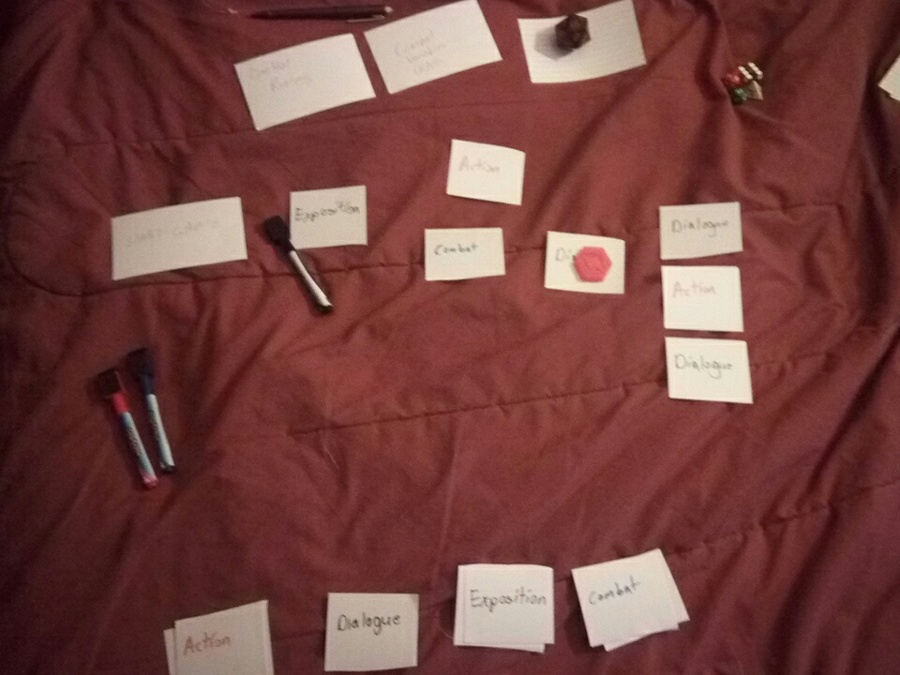This is a cross post from my blog about the development of my current game project. To follow its progress further and maybe look at some other art, head over to https://xuelder.com. If you want to see the first Devlog, you can find it here: https://xuelder.com/post/176134308030/project-bonsai-devlog-1
When I took my first Game Dev Group Project class, I thought paper prototypes were dumb and unnecessary. Till I found out that a mechanic I was really attached would not work, and thankfully we realized it during that before any coding had occurred. However, I seemed to not learn from this lesson, because in previous solo projects before this current one I did did not do paper prototypes. Granted, I feel as if I half assed most of those projects, as they usually resulted in a spiral of feature creep and scoping issues. So I am doing this project “right,” and working on making sure the mechanics work before I actually start implementing them fully in my game.
To do this I needed supplies. However, the great thing about being a tabletop nerd is that I just have no shortage of tokens, dice, and notecards, supplies that are very useful for paper prototyping. If you don’t know how this works, there are various tutorials from GDC talks that go over this, my favorite is Raph Koster’s GDC talk called Practical Creativity[1], which is just full of advice on generating mechanics in general, as well as prototyping your game. Another favorite of mine is Jamie Antonisse’s GDC talk Building a Paper Prototype For Your Narrative Design[2]. So I used a D20 to act as the player character’s(PC’s) hit point counter, a D4 and a D6 to act as the enemy and PC hit die respectively, and I used note cards to write basic rules down on, as well as using them to hold certain events. A token was used to keep the player’s progress in the narrative tree; depending on which side was up informs one to whether or not the PC had a status effect inflicted on them, which was kept track with a whiteboard. A good old fashion timer was used to test timed events, based on status effects as well as in game events.

All in all this led me to conclude that most of what I have already planned on doing would not be fairly complicated. Several changes I did make from the results of this prototype was the timed events were switched from their initial time of 5 seconds to 10 seconds, but this will probably need more testing once I see how this affects long passaged events. I also removed a paralysis effect that made it so you could only pick the first narrative choice, as it did not really feel fair to the player, and did not sit well with me. So with this in mind, I believe that I can go forward on scripting out the story treatment into a script, and applying this paper prototype into a narrative prototype over the next few days. I will post how that goes on my next dev log. For more day to day updates on the game, follow me on twitter @Xuelder, and hope you have a good day.